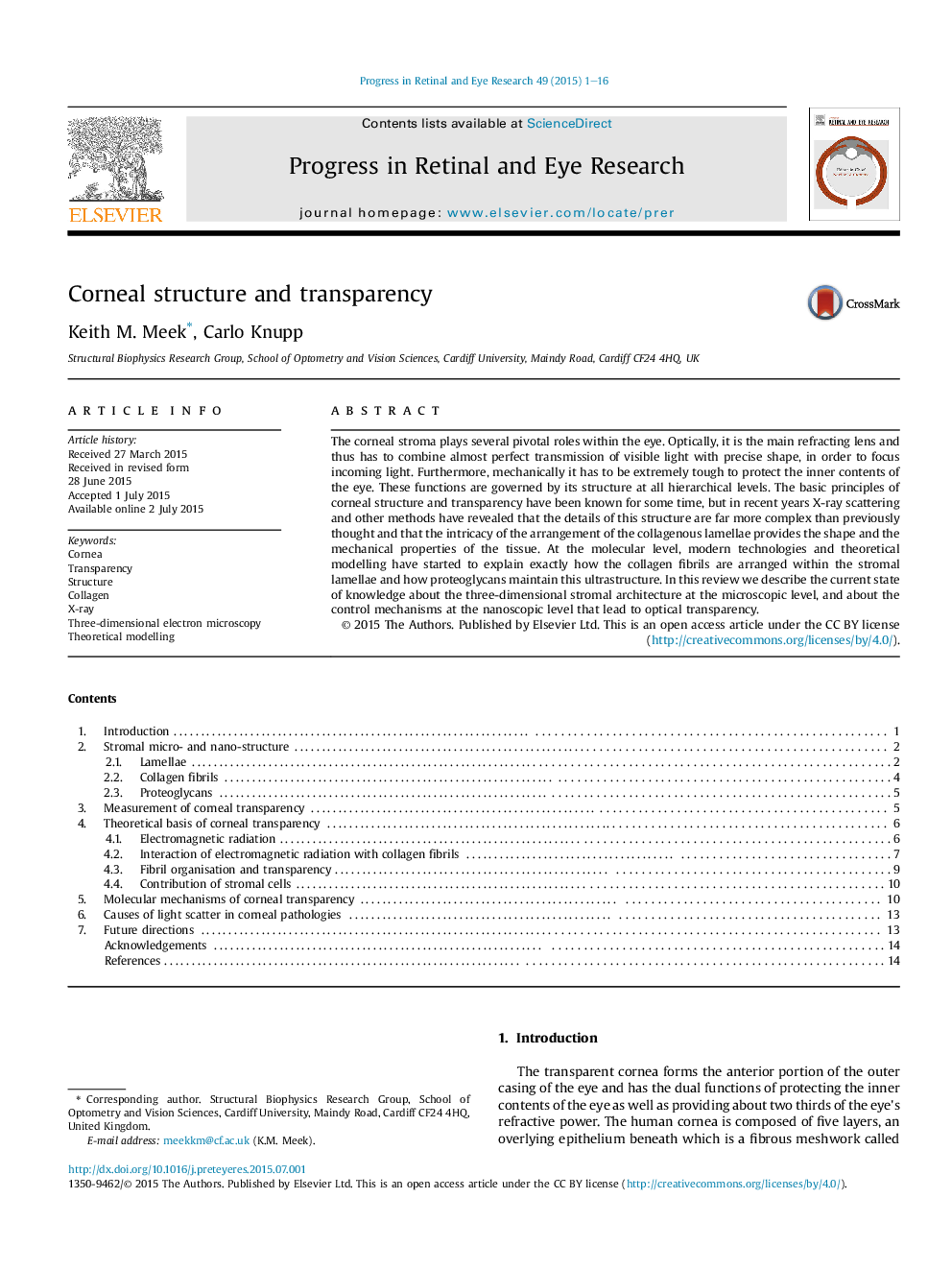| Article ID | Journal | Published Year | Pages | File Type |
|---|---|---|---|---|
| 6202696 | Progress in Retinal and Eye Research | 2015 | 16 Pages |
â¢We are coming close to understanding how its complex structure governs the shape and biomechanical behaviour of the cornea.â¢Transparency arises from the arrangement of collagen fibrils and the presence of crystallins within the stromal cells.â¢Fibril positions at any instant are maintained by the arrangement of proteoglycans around and between them.â¢Transparency loss in pathology or following surgery can arise from a combination of many different structural alterations.
The corneal stroma plays several pivotal roles within the eye. Optically, it is the main refracting lens and thus has to combine almost perfect transmission of visible light with precise shape, in order to focus incoming light. Furthermore, mechanically it has to be extremely tough to protect the inner contents of the eye. These functions are governed by its structure at all hierarchical levels. The basic principles of corneal structure and transparency have been known for some time, but in recent years X-ray scattering and other methods have revealed that the details of this structure are far more complex than previously thought and that the intricacy of the arrangement of the collagenous lamellae provides the shape and the mechanical properties of the tissue. At the molecular level, modern technologies and theoretical modelling have started to explain exactly how the collagen fibrils are arranged within the stromal lamellae and how proteoglycans maintain this ultrastructure. In this review we describe the current state of knowledge about the three-dimensional stromal architecture at the microscopic level, and about the control mechanisms at the nanoscopic level that lead to optical transparency.
